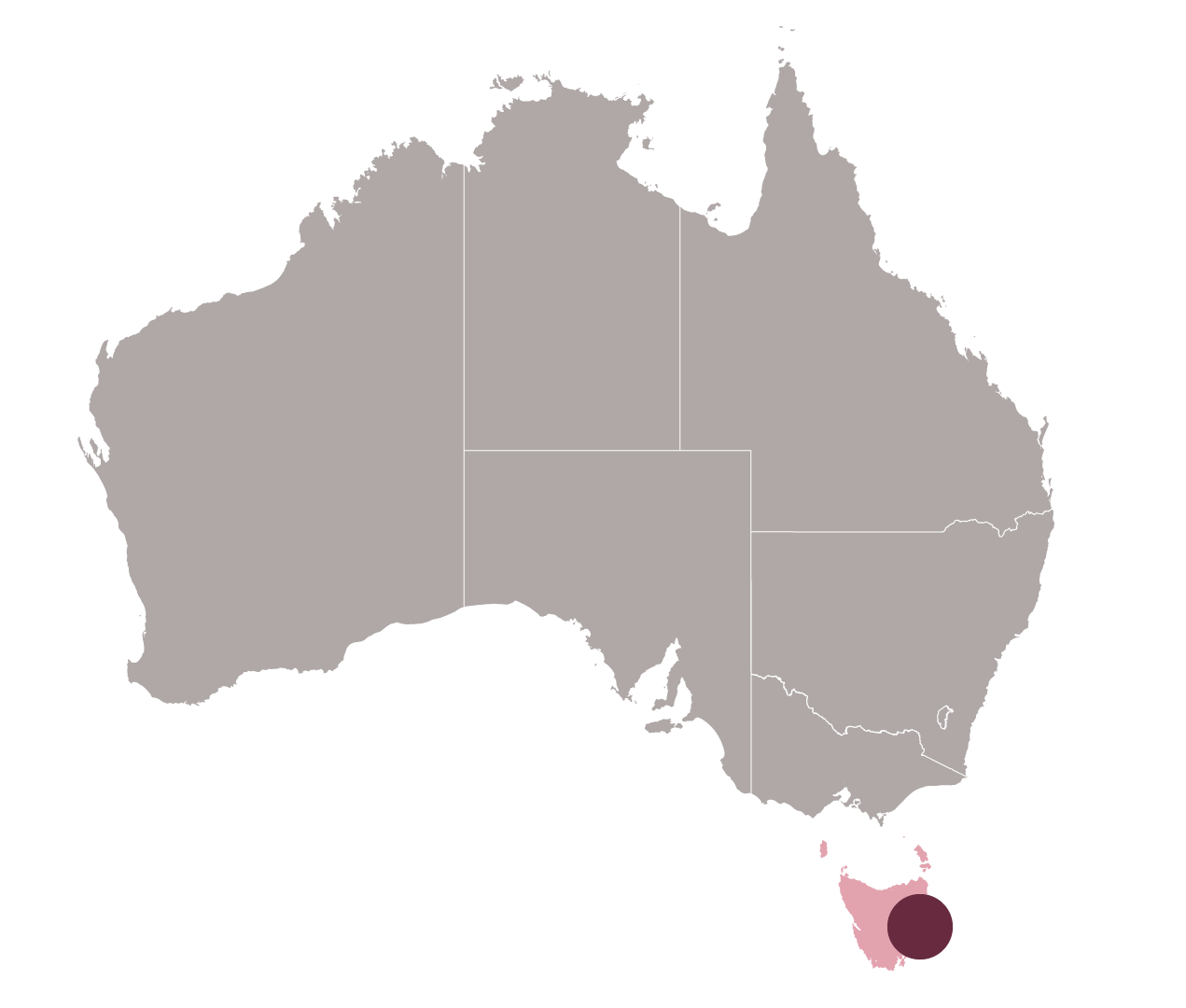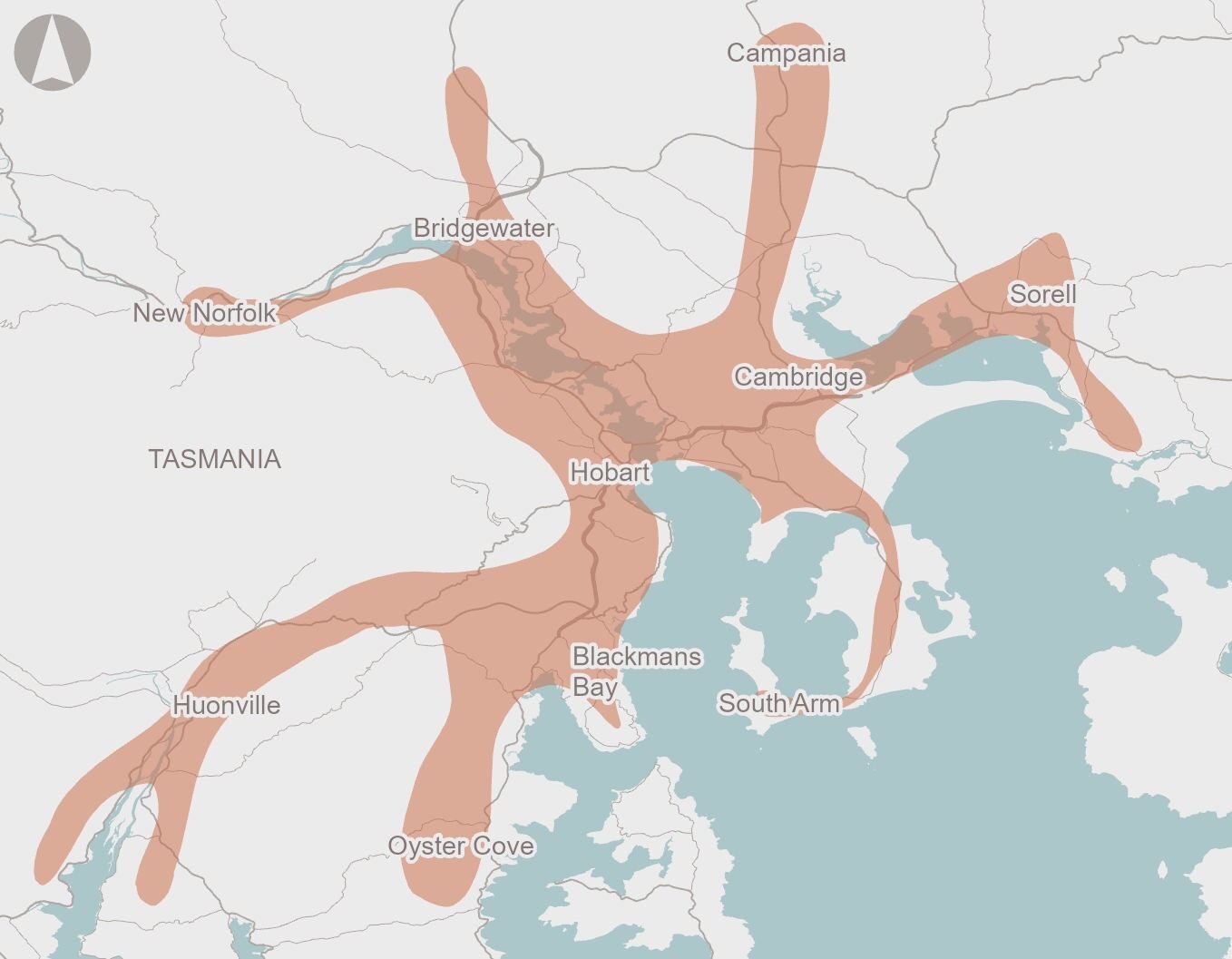

Transport challenges in the Greater Hobart area are adversely impacting quality of life, productivity, and the environment. Private vehicles are the primary mode of transport with public transport usage accounting for less than 7% of trips, much lower than the national urban average of 15%, resulting in congestion, delays and environmental impacts associated with private vehicle emissions.
The lack of a freight detour around Hobart’s CBD further contributes to congestion. Population growth is expected to exacerbate these challenges with 44% of Tasmania’s population living in Greater Hobart.
Strategic Fit
Addressing the transport challenges in Greater Hobart aligns with Australian and Tasmanian Government’s objectives, and strategic plans.
The proposal aligns to the Australian Government's Infrastructure Policy Statement which emphasises the importance of safe, efficient, and sustainable transport systems. Optimising freight movement through Greater Hobart will contribute to freight efficiency and reliability objectives in the National Freight and Supply Chain Strategy, and reducing carbon emissions and promoting sustainable transport by upgrade of public transport will support achieving the National Climate Resilience and Adaptation Strategy.
The 30-Year Greater Hobart Plan emphasises the need for a modern and connected public transport system, reducing reliance on private cars, and promoting sustainable development
Societal Impact
Quality of life improvements and productivity benefits are expected as a result of addressing the transport challenges within Greater Hobart.
Only 40% of households are within a 10-minute walk of a frequent public transport route. Reducing private vehicle mode share through interventions such as increasing public transport service frequency and expanding the public and active transport networks will improve access between jobs and housing, reduce travel times and encourage urban renewal.
Additionally, optimising freight efficiency through, to and within Hobart will support economic growth and reliability. Overall, addressing Greater Hobart’s transport issues is expected to contribute to a more sustainable, efficient, and liveable urban environment.
Deliverability
The identified problems could be addressed by improving public transport, active transport, and intelligent transport systems. Potential responses include expanding public transport coverage, improving service frequency and reliability, and optimising freight routes. Risks include market capacity, public willingness to adopt alternative transport, and access to public transport services. Further work should include detailed planning, stakeholder engagement, and securing funding to ensure successful implementation and operation.
Proponent to develop potential investment options (Stage 2 of Infrastructure Australia’s Assessment Framework), and complete business case development (Stage 3 of the Framework)
Infrastructure Australia recommends a program business case is developed to determine a range of value for money solutions that together will address the identified problems and opportunities. Solutions should be identified through a robust options analysis process that considers non-build interventions such as making better use of existing transport corridors and education campaigns and incentives that will improve public transport patronage.


 EVALUATION COMPLETE
EVALUATION COMPLETE




